| |
No passport, no problem when heading to Puerto Rico
By Tom Adkinson
October 20, 2023
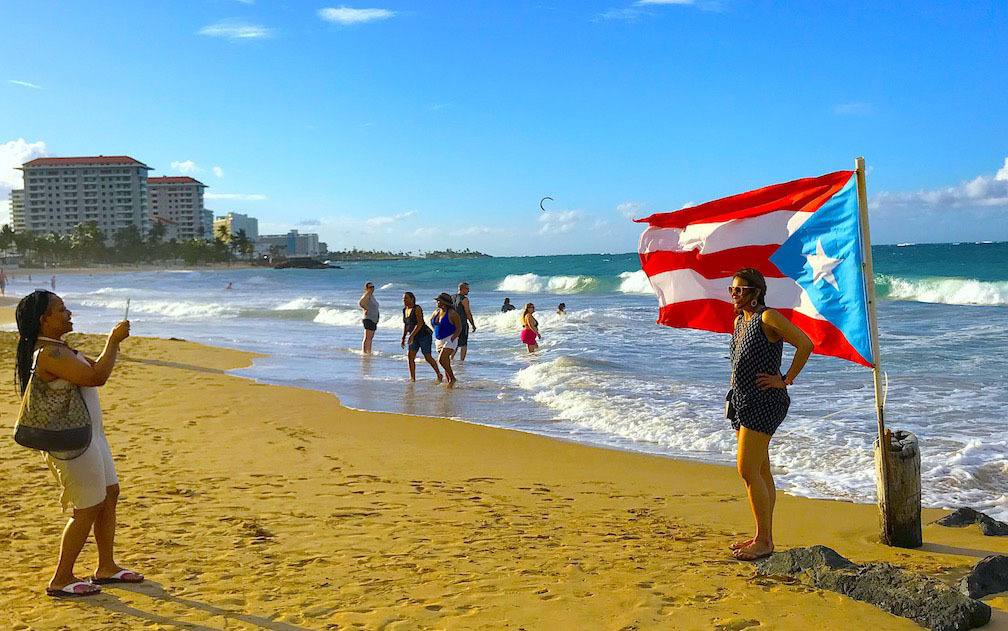
The red, white and blue of Puerto Rico’s flag provide an accent for this vacationer’s time on Condado Beach in metro San Juan. Image by Tom Adkinson
|
SAN JUAN, Puerto Rico – Brad Dean is the Bob Barker or Drew Carey of Puerto Rico. No, he doesn’t host a TV game show in the mold of “The Price Is Right,” but as the island’s tourism director, he certainly knows about shouting, “Come on down!”
And better than Barker and Carey, Dean doesn’t make you take chances to win a prize. If you do “come on down” to Puerto Rico, you’re an automatic winner.
Despite the everyone’s-a-winner reality, Dean still has challenges getting some potential visitors from the U.S. to book a flight.
Research done for Discover Puerto Rico, the island’s destination marketing organization where Dean is the CEO, found that approximately one-third of Americans don’t know that visiting Puerto Rico doesn’t require a passport to bask in the sunshine and culture of this tropical destination. Perhaps those folks slept through history class and also don’t know that Puerto Rico is a U.S. territory and that Puerto Ricans are U.S. citizens.
“Puerto Rico offers the comfort and convenience of travel in the U.S., but with an international allure,” Dean said.
Other bonuses of U.S. connectivity include not having to convert currency, not needing an international cellphone plan and using USPS postage stamps if you still mail vacation postcards. Also, mainland traffic rules apply, meaning you drive on the right-hand side of the road.
The roughly rectangular island is larger than Rhode Island but smaller than Connecticut, and it is big by Caribbean standards. Only Cuba, Hispaniola and Jamaica are bigger. Puerto Rico stretches almost 100 miles east to west and about 35 miles north to south.
It possesses the international allure that Dean mentioned because of hundreds of years of Spanish influence overlaid on the indigenous Taino population and augmented by other cultures that resulted from Spain’s importation of enslaved Africans. Spain’s imprint began in 1493 when Christopher Columbus sailed in from the east.
Puerto Rico was a Spanish colony until 1898 when the U.S. took control after the Spanish-American War.
Sunshine, sandy beaches, rum and Caribbean-influenced food attract many visitors, but Dean and the island’s residents also want visitors to “live Boricua.” Puerto Ricans often refer to themselves as Boricua, a term that honors the island’s heritage. It also means “a way of life, a state of mind, a rhythm and flavor that is distinctly Puerto Rico,” according to promotional literature.
While strolling the cobblestone streets of history-laden San Juan is a given for first-time visitors, Dean encourages everyone to explore the entire island and meet the people.
“A rich and vibrant culture is on display all over the island. They (locals) don’t just invite you to the party. They want you to dance,” he said, noting that when visitors explore, significant variety awaits them.
“People are looking to get past the bucket list and Instagram mentality, and actually do things – and Puerto Rico has plenty to offer,” he added.
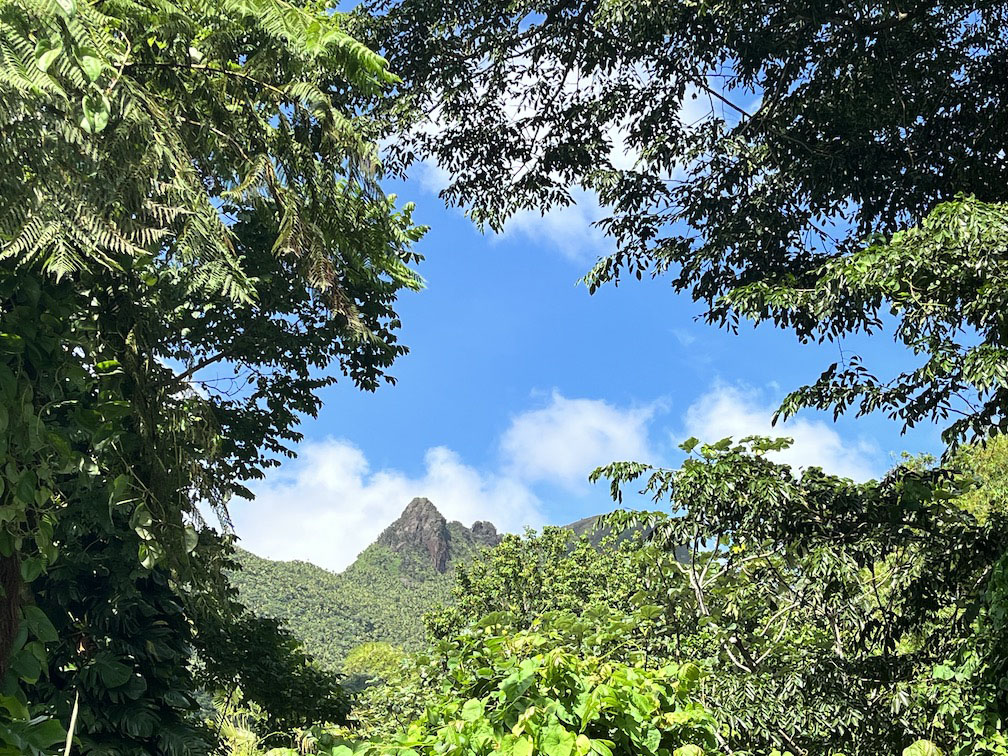
Tropical foliage and towering peaks accent El Yunque, the only tropical rainforest in America’s national forest system. Image by Tom Adkinson
|
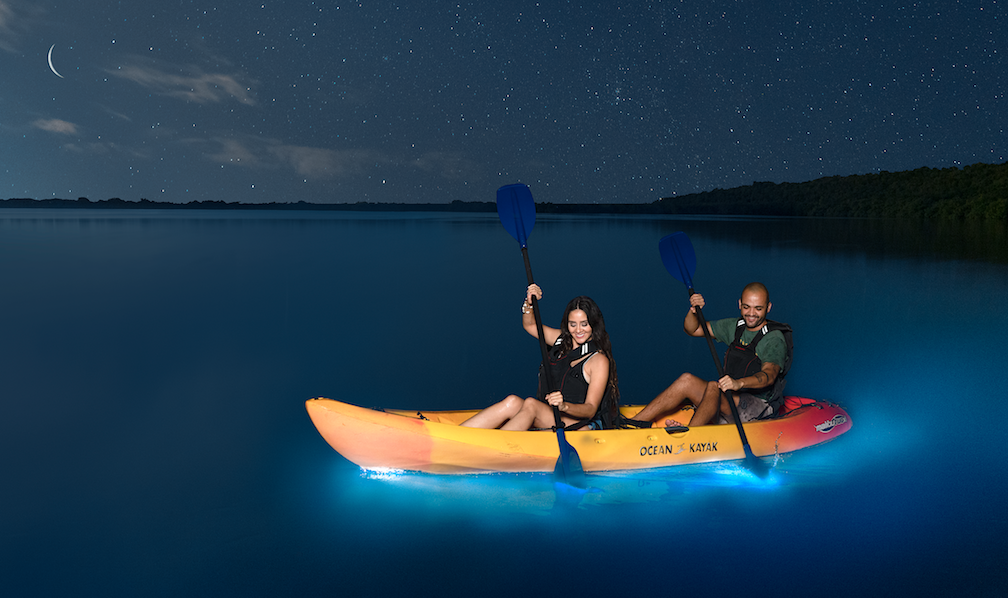
Kayakers marvel at the peculiar glow of a bioluminescent bay. Puerto Rico has three of the five such bays in the world. Image from Discover Puerto Rico
|
Among the popular destinations are three of the world’s five bioluminescent bays (where every stroke of a kayak paddle invigorates glow-in-the-dark microscopic organisms that light up the water), El Yunque (the only tropical rainforest in the U.S. national forest system and home to exceedingly rare Puerto Rican parrots), internationally famous surfing beaches such at Arecibo on the north coast and Rincon on the west coast, coffee haciendas and small-town festivals.
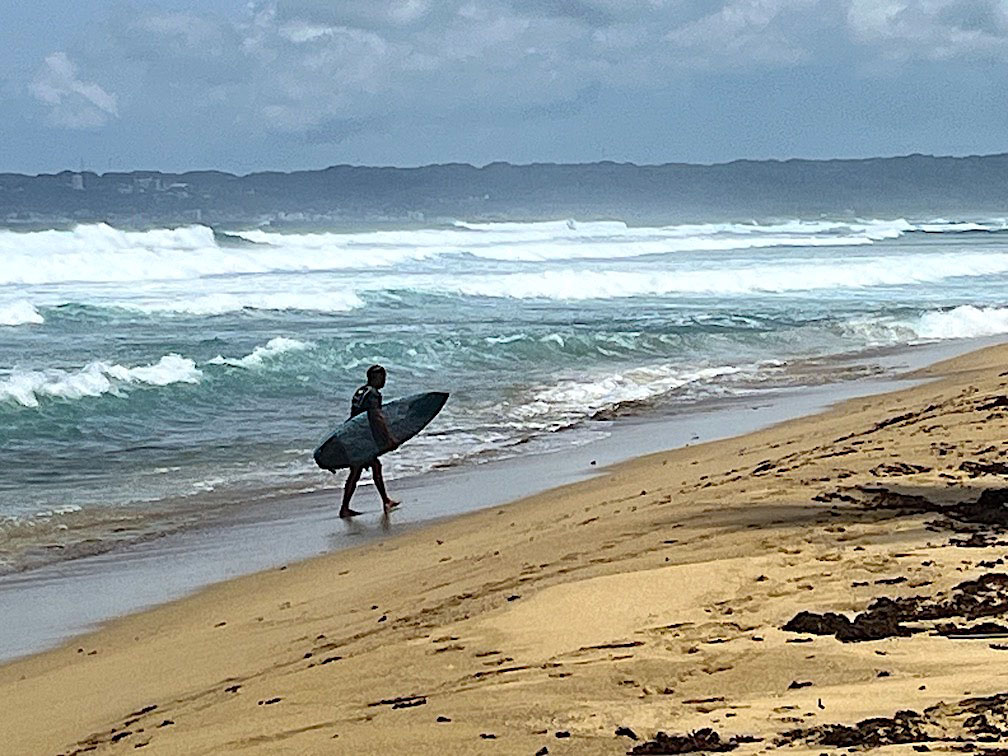
A recreational surfer heads home after a session with the waves at Rincon on Puerto Rico’s west coast. Image by Tom Adkinson
|
Hurricane Maria zapped the island in 2017, but Dean noted that visitor demand hit a record in 2019. After the Covid disruption in 2020, each successive year has outstripped the 2019 record.
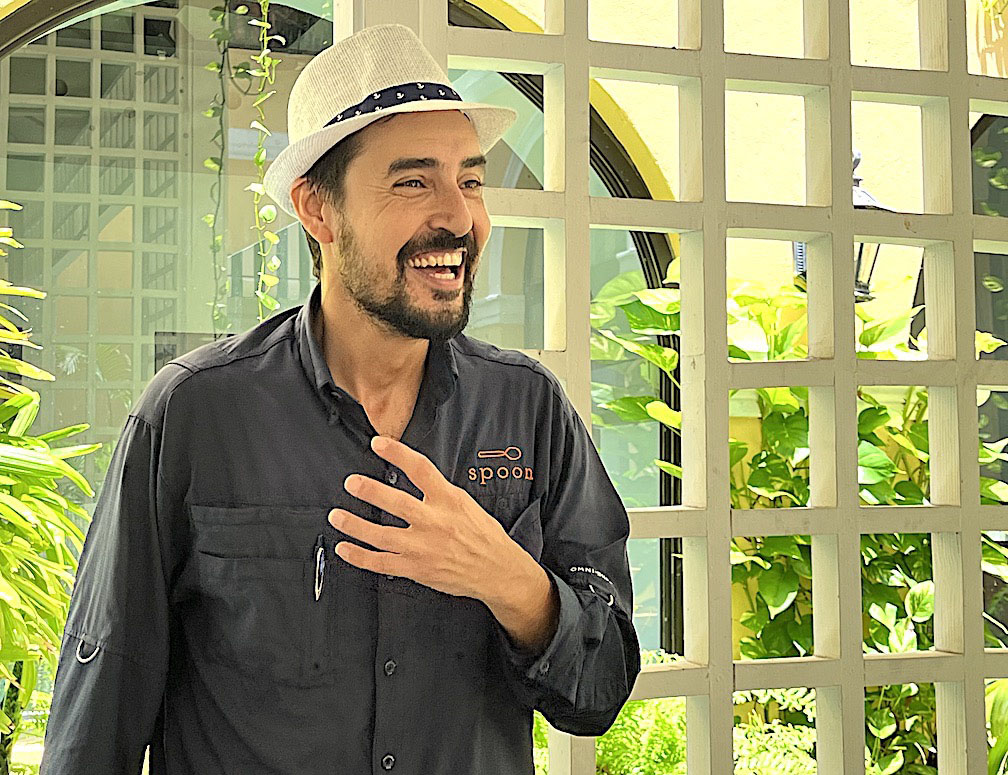
Pablo Garcia Smith, a food tour guide with Spoon Tours is a real-life example of the “live Boricua” spirit of Puerto Rico. Image by Tom Adkinson
|
Caribbean cruises that either originate in San Juan or call on that historic city are the gateway drug for many visitors to Puerto Rico, but cruise passengers get only a tiny sampling of “living Boricua” if they don’t stay a while.
Getting to Puerto Rico gets easier each year. Three international airports serve the island (San Juan’s is the biggest), and there are 80 non-stop flights a day from two dozen cities, stretching from the East Coast to Minneapolis to Denver – and you won’t need a passport at any of them.
Trip-planning resources: DiscoverPuertoRico.com, NoPassportNoProblem and TheSpoonExperience.com
|



